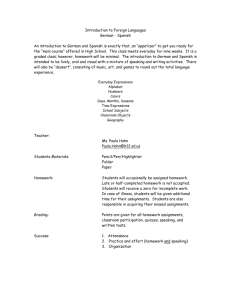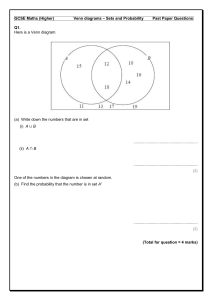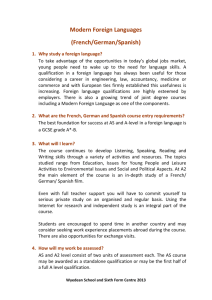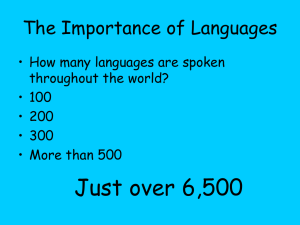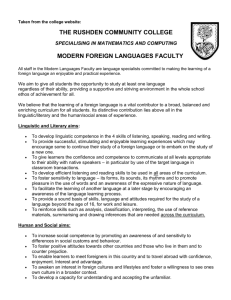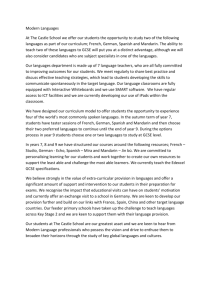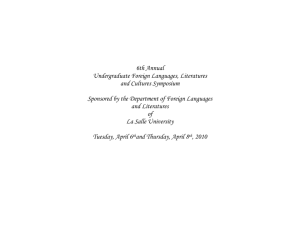5.3, 5.4, 5.5
advertisement
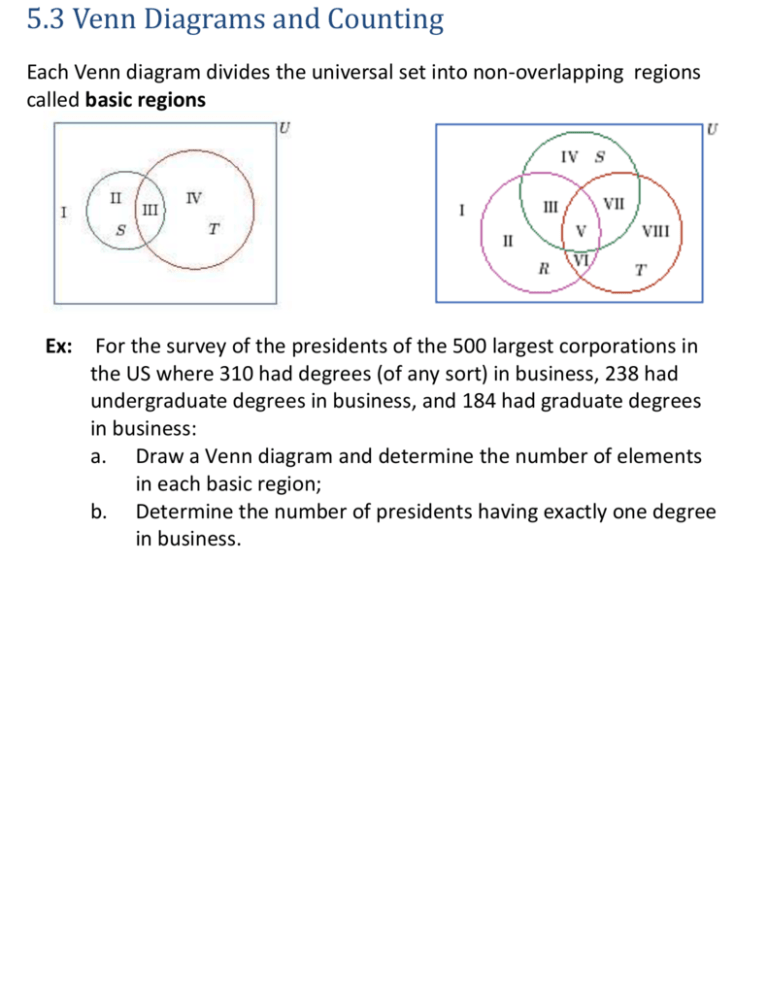
5.3 Venn Diagrams and Counting
Each Venn diagram divides the universal set into non-overlapping regions
called basic regions
Ex:
For the survey of the presidents of the 500 largest corporations in
the US where 310 had degrees (of any sort) in business, 238 had
undergraduate degrees in business, and 184 had graduate degrees
in business:
a. Draw a Venn diagram and determine the number of elements
in each basic region;
b. Determine the number of presidents having exactly one degree
in business.
Out of a group of 115 applicants for jobs at the World Bank, 70 speak
French, 65 speak Spanish, 65 speak German, 45 speak French and
Spanish, 35 speak Spanish and German, 40 speak French and German,
and 35 speak all three languages. How many of the people speak none of
these three languages? Also, how many applicants speak Spanish and
German but not French?
5.4 The Multiplication Principle
A tree diagram is a graph showing possibilities for an event having
choices along the way.
Suppose a rat in a maze starts at point A. There are five possible routes to
get from point A to point B and 3 possible routes to get from point B to
the final destination, point C. Represent the possible choices using a tree
diagram.
Multiplication Principle
Suppose that a task is composed of two consecutive operations. If
operation 1 can be performed in m ways and, for each of these,
operation 2 can be performed in n ways, then the complete task can be
performed in mn ways.
Generalized Multiplication Principle
Suppose that a task is composed of t operations performed
consecutively. Suppose operation 1 can be performed in m1 ways; for
each of these, operation 2 can be performed in m2 ways; for each of
these, operation 3 can be performed in m3 ways; and so forth. Then the
complete task can be performed in
m1m2 m3…mt ways.
Example: A corporation has a board of directors consisting of 10
members. The board must select from among its members a chairperson,
vice chairperson, and secretary. In how many ways can this be done?
5.5 Permutations and Combinations
A permutation of n objects taken r at a time.
𝑛!
P(n,r) = (𝑛−𝑟)!
How many words (strings of letters) of two distinct letters can be formed
from the letters {a, b, c}?
A combination of n objects taken r at a time is
𝑛!
C(n,r) = 𝑟!(𝑛−𝑟)!
How many two-member teams can be formed from a group that has
three members a, b, and c?
Eight horses are entered in a race in which a first, second, and third prize
will be awarded. Assuming no ties, how many different outcomes are
possible?
The board of directors of a corporation has 10 members. In how many
ways can they choose a committee of 3 board members to negotiate a
merger?
